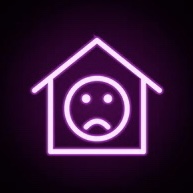“Where your bathroom?“
Upstairs, you can’t miss it.
This shit is on a whole another level
Yeah level 0.5
Ok this truly made me lol
Didn’t your mother make you?
I’d think 1.5 but yea
That depends on what country you’re in
I mean yea but it looks like it’s fairly high up tho…or at least to me it does…
Plot twist; it’s stairs down to the cellar.
deleted by creator

Just a little…
H A L L W A Y
P O O P I N
🎶I can see when you’re snoopin
While I take a hallway pooping🎶deleted by creator
High five on the way past.
deleted by creator
I prefer the didn’t make it theory. “Damnit honey I’ve shat my pants on that landing 4 times now. I’m putting in a shitter and IDGAF what anyone says.”
Well, considering my 80 year old mother pooped her way through a restaurant trying to get to the bathroom in time, this would probably be a very good idea for her if her staircase had a landing.
deleted by creator
Open the lid and hold my beer. $5 says that I can get it in the bowl from the top step.
#1 or #2?
#1 or #2
You need to escape # at the start of lines, else they’ll make the line a header on some clients
\#1 or #2
Probably is actually a “crime” for most building codes. International Residential Code for example states that “a minimum distance of 15” is required from the centerline of a toilet to any bath fixture, wall, or other obstacle"
How can it be the “International” code if it’s using inches?
Careful, asking questions like that only encourages my fellow Americans to bring you some freedom
Basically delusions of grandeur, LOL.
serious answer:
Source: https://en.wikipedia.org/wiki/International_Building_Code#History
Since the early twentieth century, the system of building regulations in the United States has been based on model building codes developed by three regional model code groups and adopted in a piecemeal fashion by local and state governments.[5] The National Codes developed by the Building Officials Code Administrators International (BOCA) were used on the East Coast and throughout the Midwest of the United States. The Standard Codes from the Southern Building Code Congress International (SBCCI) were used in the Southeast. The Uniform Codes published by the International Conference of Building Officials (ICBO) were used primarily throughout the West Coast and across a large swath of the middle of the country to most of the Midwest.
In 1972, BOCA, SBCCI, and ICBO created the Council of American Building Officials (CABO) to prepare a national building code for residential construction.[5] CABO’s One and Two Family Dwelling Code was adopted by only a handful of U.S. jurisdictions; the rest preferred to stick with the regional building codes.[5] In 1994, BOCA, SBCCI, and ICBO merged to form the International Code Council (ICC) in order to develop a comprehensive set of building codes that would have no regional limitations: the International Codes (or I-Codes).[5] There were several free trade developments that led to the founding of ICC: the ratification of the North American Free Trade Agreement, the formation of the European Union, and the EU’s efforts to unify standards for building design, construction, and materials across the European Single Market (the Eurocodes).[6] All these developments caused American construction professionals and manufacturers to push for a nationwide building code in the United States, so that they would not need to waste so much time and money complying with different provisions of the regional codes and could instead focus on compliance with other countries’ building codes in order to compete internationally for construction projects.[6]
After three years of extensive research and development, the first edition of the International Building Code was published in 2000. A new code edition has since been released every three years thereafter.[3] The code was patterned on the three legacy codes previously developed by the organizations that had formed ICC. By the year 2000, ICC had completed the International Codes series and ceased development of the legacy codes in favor of their national successors.[5]
The word “International” in the names of the ICC and all three of its predecessors, as well as the IBC and other ICC products, despite all 18 of the company’s board members being residents of the United States, reflects the fact that a number of other countries in the Caribbean and Latin America had already begun to rely on model building codes developed in the United States rather than developing their own from scratch.[citation needed] Thus, ICC from its inception was well aware that it was writing model codes for an international audience. "Calling it ‘international’ keeps it from being called the ‘U.S. Building Code.’ explains Bill Tangye, SBCCI Chief Executive Officer. “Some U.S. Model codes are already used outside the United States. Bermuda uses BOCA, and Western Samoa uses ICBO.”[7]
Kinda like the World Series… but only the US and Canada participate?
In the UK “toilets under the stairs” are quite common, both my childhood houses had one. They’re converted from old school larders so they’re tiny, and I’m sure neither had a 15” gap before the sink.
Yeah, very common in Ireland too. Had one under the stairs in the family home when I was a kid. Though it’s mainly a toilet used for that moment when the main toilet is occupied.
Stuff put in place before specific building codes are often grandfathered in, it usually applies to new construction or remodels done after whatever code was put in place.
I saw a place like this where the bathroom was two stories. Bottom floor was the bathtub, middle was the toilet.
Lol my college apartment was almost that!
It was reversed at the one I saw. The bedroom was on the 2nd floor with a shower/bath and then on the 1st floor was the toilet. I was tempted to get it since it was like $800 a month with all utilities included.
You can always pull the good ol waffle stomp if you can’t make it upstairs.
Yikes, imagine if the toilet clogs up 😬
That’s rarely a problem outside of the US. I’m not sure where this is located, though.
The stairs
The stairs Vermont?
It won’t. Because of gravity. Check mate, atheists!
The decor is good but that location…
is incredibly convenient, 10/10, nothing wrong here at all! /s
Hallway/stairway toilet, sure. Odd AF. But like, why two watering cans in one location? Is that also the only sink? Would I have to wash my dishes there as well?
The blue one is the bidet. Don’t be gross and use your plant watering can to clean your ass, man.
It’s a muslim house, the watering cans aren’t for the plants.
deleted by creator
Depending on your perspective this can be:
- a bathroom
- a hallway
- a toilet
- multi purpose mezzanine
So i imagine when the sale gets posted it wil list all of the above with a ✅ rather then a count.
Multi purpose mezzanine 😂😂
Yea, 1 or 2
Technically more than 1 purpose.
That’s funny…
I just looked at a local listing a few days ago that was listed as 0 bedrooms and 1 bath but also mentioned an office and spare bedroom in the description…
Turns out there really isn’t an actual bedroom at all… The “main” bed is in the living room where most people would have a couch and it’s wide open to the kitchen.
Then there is a shed out back that has a bed in it and electricity wired to it… This was elaborated on in the description to be either a “spare bedroom, office, she-shed, etc… The possibilities are endless”.
Then there was a stackable washer dryer unit in this rock and dirt basement that looks like some torture chamber where you’d expect to find a body or two buried.
Built in 1909… Tiny lot… Maybe .04 acre at best… $350K
There actually was one relatively normal bathroom though.
the whole second floor is a bathroom
Well, let’s give it the best possible chance at being a room. And say that at the top and bottom of those stairs is a door.
The toilet would need to be at least 15" from the wall to the center line, which let’s also say it is exactly.
The smallest a bathroom can be is 15 sq feet. Stairs don’t count, and it’s probably fine, because stairs have to be 36" wide, and landings need to match that. So that passes. Cielings must be at least 80" and because this is actually a fucking stairwell, and ceiling minimums are measured from the nose of the first stair, they will more than pass.
So sadly, this is arguably a 1/2 bath. Honestly I’ve seen smaller.
However this still violates code. Stairway landings need to have clear space at least as long as the stair is wide. And building permanent structures on landings isn’t allowed inside that space.
Project zomboid
Loo with a View
Does this house predate indoor plumbing.












